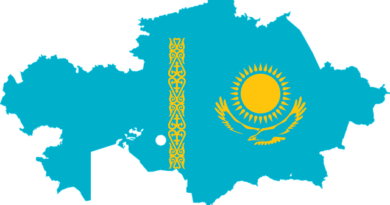India Myanmar Relation
Context:
Recently, India has provided 10 lakh doses of ‘Made in India’ coronavirus vaccines and a grant of 10,000 tonnes of rice and wheat to Myanmar as part of its continued humanitarian support for the neighbouring country.
Introduction:
India Myanmar relations are rooted in shared historical, ethnic, cultural and religious ties. As the land of Lord Buddha, India is a country of pilgrimage for the people of Myanmar. India and Myanmar relations have stood the test of time. The geographical proximity of the two countries has helped develop and sustain cordial relations and facilitated people-to people contact. India and Myanmar share a long land border of over 1600 km and a maritime boundary in the Bay of Bengal. A large population of Indian origin (according to some estimates about 2.5 million) lives in Myanmar. India and Myanmar signed a Treaty of Friendship in 1951. The visit of the Prime Minister Rajiv Gandhi in 1987 laid the foundations for a stronger relationship between India and Myanmar.
About India Myanmar relation:
Myanmar is important to India from a geopolitical point of view as it geographically stands at the crossroads of India-Southeast relations. Myanmar is the only Southeast Asian country that shares a land border with northeastern India, stretching some 1,624 kilometers. The neighbors also share a 725-km maritime boundary in the Bay of Bengal.
Being the only country that sits at the intersection of India’s “Neighborhood First” policy and its “Look East” policy, Myanmar is an essential element in India’s practice of regional diplomacy in the Indo-Pacific and serves as a land bridge to connect South Asia and Southeast Asia. In recognition of this importance, Myanmar was given the status of observer in SAARC in August 2008.
It is therefore in India’s interest to see Myanmar prevail as a stable and autonomous country, thereby making possible greater bilateral engagement in India-Myanmar relations.
The 5 B’s:
A bridge between South Asia and Southeast Asia, Myanmar has loomed large on India’s diplomatic horizon. Blending business, culture, and diplomacy, there is a strong connection between the two countries. Buddhism, Business, Bollywood, Bharatnatyam, and Burma teak— these are the five Bs that frame India-Myanmar relations in the popular imagination. Moving beyond this rich configuration, the relations are now acquiring greater economic weight and strategic orientation. The talks in Nay Pyi Taw, the new capital of Myanmar, has set the stage for Prime Minister Modi’s visit to the Southeast Asian country in November for the India-ASEAN summit and East Asia Summit. The importance of Myanmar for India is all-too-obvious: India and Myanmar share a long land border of over 1600 km and a maritime boundary in the Bay of Bengal.
India’s Economic Relations with Myanmar
India is the second largest market for Burmese exports after Thailand. The bilateral trade stands at approximately $2.2billion (2016-17). Agriculture sector dominates the bilateral trade which comprises mostly of pulses and beans imports to India. India is also the tenth largest investor in Myanmar. India has substantial investments in Myanmar’s oil and gas sector.
Border trade:
- India and Myanmar signed a border trade agreement in 1994 and have two operational border trade points (Moreh-Tamu and Zowkhatar –Rhi on the 1643 km long border.
- A third border trade point is proposed to be opened at AvakhungPansat/Somrai. With an estimated border trade of US$ 12.8 mn(2010-11),
- Major items bought by Myanmar traders from the Indian side are cotton yarn, auto parts, soya bean meal and pharmaceuticals, (reports also about smuggling of items like fertilizers, vehicles particularly two wheelers etc.); betel nut, dried ginger, green mung beans, turmeric roots, resin and medicinal herbs are the main items sold from Myanmar to India.
- During the 3rd India-Myanmar Joint Trade Committee in October 2008, it was agreed that Border Trade at the existing points would be upgraded to Normal Trade so as to promote bilateral trade between the two countries. Notifications to this effect have been issued by both sides
Culture Exchange:
Performances by Indian cultural troupes in Myanmar have been organised on a regular basis since 1997. Various cultural troupes have exchanged visits and performed in both countries. In November 2009, a 13-member student group from Myanmar attended SAARC Cultural Festival in India. In December 2009, a popular Myanmar music band ‘Emperor’ went to India to participate in the “South Asian Bands Festival” organized by ICCR. They also performed in Shillong, Meghalaya. In January 2010, the Embassy organized the annual “Indian Film Festival” at Yangon. This event has become a highlight of the Yangon cultural calendar. In March 2010, a famous landscape artist from Myanmar went to Puducherry, India to participate in “South Asian Artists Camp” organized by ICCR and SEHER. The paintings emerging from that camp were exhibited in the Embassy Auditorium in November 2010 and received an outstanding response from the local community. A 15-member theatre group from Myanmar went to India participate in “South Asian Theatre Festival” organized by ICCR and NSD in March 2010. The “Abiogenesis” band performed Yangon and Mandalay in the last week of May 2010. A Qawalli group (Sabri Brothers) performed in Yangon and other cities in Myanmar in January 2011. There was a packed calendar of commemorative activities for the Rabindranath Tagore 150th birth anniversary celebrations, including a dance drama, seminar, artists’ camp, film festival etc. All the events were very well received by the Myanmar public and media. Classes in Bharatnatyam and Yoga have been started in the Embassy since December 2010, with the support of the ICCR.
Indian Diaspora
The origin of the Indian community in Myanmar is traced back to the mid-19th century with the advent of the British rule in Lower Burma in 1852. The two cities of Myanmar namely, Yangon (former Rangoon) and Mandalay had a dominating presence of Indians in various fields such as civil services, education, trade & commerce during the British rule. According to 1983 official census of Myanmar the number of PIOs in Myanmar is 428,428 and the estimated number of stateless PIOs is to be 250,000. A large number of the Indian community (nearly 150,000) live in Bago (Zeyawaddy & Kyautaga) and Tanintharyi Regions and Mon State and are primarily engaged in farming. The NRI families in Myanmar mainly live in Yangon and are engaged in export-import business or are employees of MNCs based in India, Singapore and Thailand.
Cooperation between India and Myanmar in the regional/Sub-regional Context
ASEAN:
Myanmar became a member of ASEAN in July 1997. As the only ASEAN country which shares a land border with India, Myanmar is a bridge between India and ASEAN. A few proposals for cooperation have been implemented and some are under discussions with Myanmar within the framework of ASEAN’s IAI programme.
BIMSTEC:
Myanmar became a member of BIMSTEC in December 1997. Myanmar is a signatory to the BIMSTEC Free Trade Agreement. Myanmar is the lead country for the energy sector. Myanmar trades mostly with Thailand and India in the BIMSTEC region. Myanmar’s major exports to India are agricultural products like beans, pulses and maize and forest products such as teak and hardwoods. Its imports from India include chemical products, pharmaceuticals, electrical appliances and transport equipment. The 13th BIMSTEC Ministerial Meeting was held in Myanmar in January 2011.
Mekong Ganga Cooperation:
Myanmar is a member of the Mekong Ganga Cooperation (MGC) since its inception in November 2000. MGC is an initiative by six countries – India and five ASEAN countries namely, Cambodia, Laos, Myanmar, Thailand and Vietnam – for cooperation in the fields of tourism, education, culture, transport and communication. The chairmanship of MGC is assumed by member countries in alphabetical order.
SAARC: Myanmar was given the status of observer in SAARC in August 2008.
India Myanmar Relations Challenges
- Bilateral trade between the two countries remains far below potential. A major reason for this is the movement of infrastructure projects at snail s pace. Notably, India’s project implementation capacity is very lacklustre.
- Rohingya Influx India hosts nearly 40,000 Rohingya Muslims who are denied citizenship in Myanmar and who sought refuge in India in order to escape religious persecution. But India faces tremendous burden on its resources on account of refugees and also apprehends a security threat from radicalized Rohingya youth. As a result, India pushes for repatriation of refugees back into Myanmar.
- Growing Chinese presence Myanmar agreed to be a part of the Belt and Road Initiative and has also welcomed Chinese investments in various infrastructure projects including port projects such as Kyaukpyu port. This has made India apprehensive as growing Chinese presence in India s neighbourhood spells strategic concerns.
- Conflict in Rakhine state Rakhine state is central to many a connectivity projects currently underway between India and Myanmar such as the Kaladan Multi-modal highway. Conflict in the region has slowed the progress of such projects. This does not augur well for a bilateral trade.
- India imposed restrictions on the import of pulses in order to improve price realization for Indian farmers. This decision did not go down well with the Mynamarese government as it impacted Myanmar s exports to India.
India shares many common concerns with Myanmar that range from socio-economic development, similar ecological and climatic concerns, shared concerns over insurgency and regional peace and preserving sovereignty in light of growing Chinese assertiveness. These offer tremendous scope for cooperation. India needs to seize this opportunity and expedite the work on ongoing projects while at the same time exercising soft power through constructive aid and cultural exchange.
Source: The Hindu
You can find many articles on INTERNATIONAL RELATION(part of GS II) in our website. Go through these articles share with your friends and post your views in comment section.



